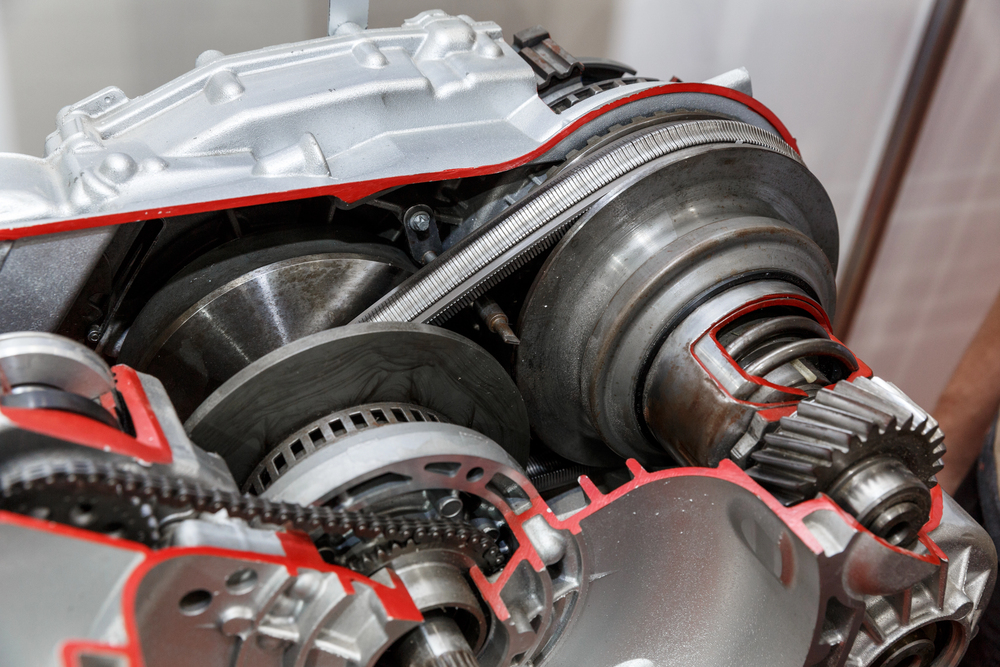Why you should never buy a car with a CVT transmission
Valerie Raskovic

Whether you're about to buy your first car or upgrading your current ride, it is vital that you make a smart decision that you do not later come to regret. Choosing a vehicle is a very personal thing. A car should complement your lifestyle while fitting within your budget.
While researching different makes and models of vehicles is an essential part of the car-buying process, it is important to keep in mind that some vehicles have serious flaws that in most cases outweigh their overall benefits. Spend some time reading reviews, both online and from trusted sources. While there are many options of cars out there, it is vital to keep in mind that they are not all created equal. Some vehicles feature drivetrains prone to failure.
The most common drivetrain component to suffer a premature failure tends to be the CVT automatic transmission. CVT stands for Continuously Variable Transmission. While these transmissions may offer a marginally better fuel economy, they are predisposed to various faults and excessive wear, causing premature failures.
It’s important to understand that CVTs operate differently from traditional automatic or manual transmissions. They rely on a belt or chain and pulley system to provide an infinite range of gear ratios, rather than fixed gear sets. This design choice, while offering smooth acceleration and fuel efficiency benefits, also introduces specific vulnerabilities.
One major reason for CVT susceptibility to failure is due to excessive heat and wear caused by the friction that occurs as the belt or chain runs between two pulleys to convert the power from the engine to power applied to the wheels. Due to the fact that the CVT transmission allows a certain amount of level of slip between the belts and the pulleys during hard acceleration or when moving from a complete stop, it introduces additional stress on moving parts. Over time, CVT components can wear down, especially when introduced to stop-and-go city driving. The belt or chain material can degrade due to heat, friction, and normal wear, leading to slippage or breakage. Additionally, the pulleys and idler pulleys have moving parts that require precise alignment and lubrication and any misalignment or lack of proper maintenance can cause premature wear.
Another factor is the electronic control system. CVTs use sensors and a transmission control module (TCM) to monitor and adjust the pulley positions in real-time. If any of these electronic components fail—such as sensors for speed, engine load or temperature—the CVT can malfunction, leading to issues like erratic shifting, loss of power, or even complete transmission failure. Considering the fact that some of these complex electronic systems live within the transmission itself, their reliability can be affected by electrical issues, software glitches, gasket/O-ring failure and contaminated CVT fluid.
Driving habits also play a significant role. Because CVTs don't have distinct gear changes like traditional transmissions, drivers might be tempted to accelerate more aggressively, thinking they're not shifting. However, this constant stress on the CVT components (especially the belt/chain and pulleys) can lead to faster wear. Additionally, frequent stop-and-go driving in hot weather can cause the CVT fluid to break down more quickly, reducing its ability to cool and lubricate the components properly.
The heat and fluid management of CVTs is another concern. Unlike traditional transmissions, which have more room for heat dissipation, CVTs can run at higher temperatures due to the constant engagement of the belt/chain. This heat can cause the transmission fluid to break down faster, reducing its lubricating and cooling properties. If the fluid isn't changed regularly or if the wrong type of fluid is used, this can accelerate component wear and lead to failure.
This issue can be further compounded by some manufacturer’s claims of “Lifetime Fluid”, which is amongst the most commonly misunderstood terms in the automotive industry. What a lot of the manufacturers consider lifetime has to do with the life of the car within the warranty period, not an actual human life term. This is a bit disingenuous considering the fact that some manufacturers do not make this very clear, making the customers assume that the transmission will not require service for the life of the car. However, neglecting fluid changes and regular inspections can lead to problems. In most vehicles that feature the CVT transmission the CVT fluid will need to be replaced every 35,000 to 60,000 miles to ensure the longevity of the CVT transmission. Additionally, using aftermarket parts or fluids that aren't compatible with the CVT design can cause premature failure.
Amongst the common vehicles that feature these problem-prone transmissions are various Nissan models like the Nissan Altima, Nissan Pathfinder and Nissan Rogue. However, it is not just Nissan that has a problem with their transmission. The 2014 -2018 Subaru Forester equipped with the CVT transmission also suffered premature CVT failures such as valve body faults, excessive CVT belt/chain wear and premature failure. There are a slew of other vehicles from different manufacturers, such as Infiniti, Kia, Ford and Jeep, that offer vehicles with transmissions known for premature failure.
In summary, it is up to you, the buyer, to research each of the vehicle candidates you may be thinking of purchasing and identify issues reported by current owners in order to weigh the good and the bad. While vehicles equipped with a CVT transmission may offer advantages like smooth acceleration and fuel efficiency, their design, electronic complexity, and sensitivity to driving habits and maintenance make them more prone to failure compared to traditional transmission types.
Read more articles

